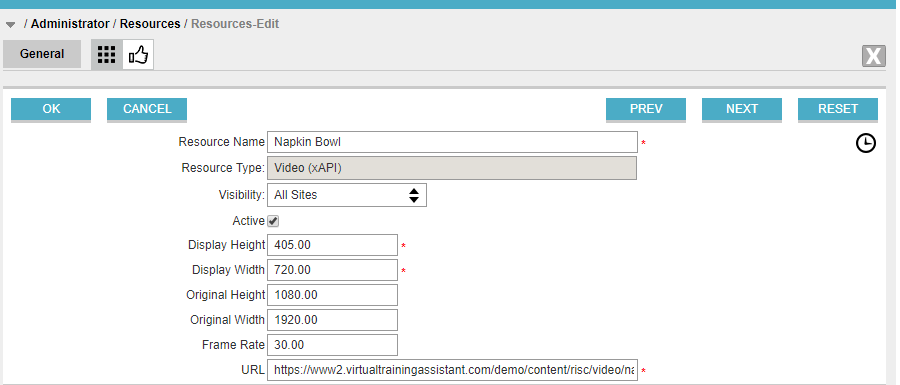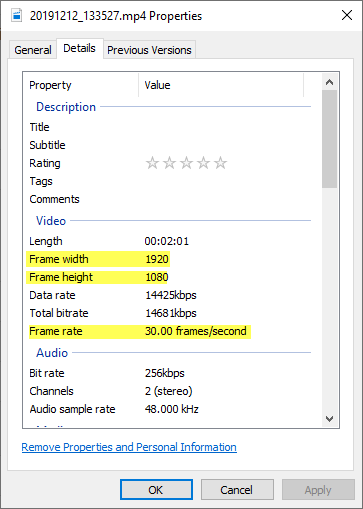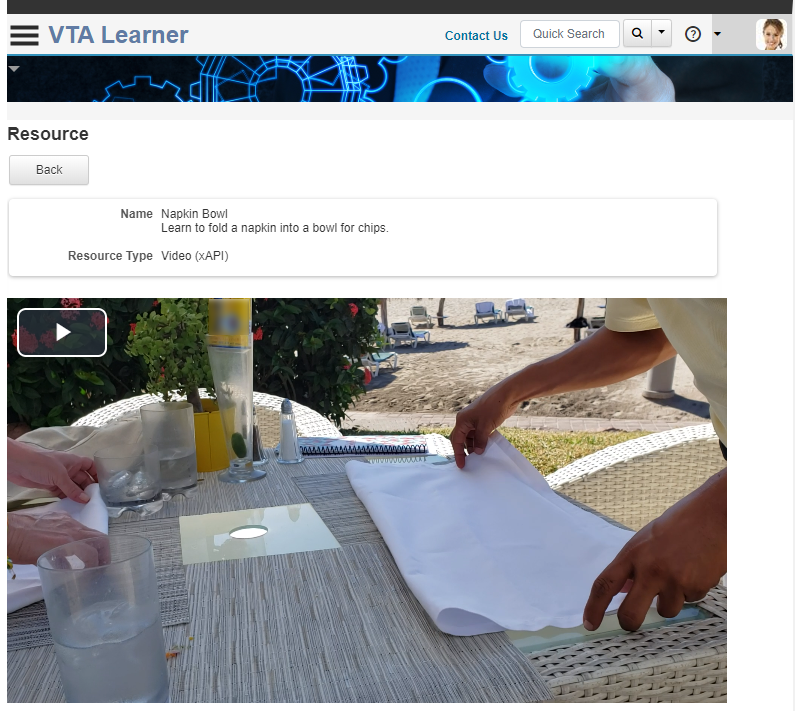RISC has long supported YouTube videos in the VTA Resource feature. This support includes xAPI statements to track usage. We realize that many customers cannot link to YouTube videos due to corporate policy. For this reason, we have now created support for Resource videos that reside elsewhere, even behind your firewall. And our player fully supports the xAPI Video Profile.
Creating a Video Resource Type
If you want to use the new RISC video player with xAPI statements, there are certain requirements for setting up the resource type. If you would like RISC to do this for you, just let us know; we have a script we can run in the database to instantly create the resource type.
1) The Resource Type must be named “Video (xAPI)”. Why? We use this name to let Learner know that the RISC video player should be used.
2) The resource type must include the following Resource Type fields:
| Field Name | Type | Length | Description |
| Display Height | Number | 4 | Initial height when the video is displayed |
| Display Width | Number | 4 | Initial width when the video is displayed |
| Original Height | Number | 4 | The actual height of the video file. |
| Original Width | Number | 4 | The actual width of the video file. |
| Frame Rate | Number | 5.2 | The frame rate of the video file. |
| URL | Url | 500 | The link to the video file. |
Create your Video Resources
Here is an example using this Resource Type in VTA Backoffice:
So how do you obtain the properties?
1) The display height and width are up to you, but you should keep the same proportions as the original height and width of the video.
2) The original height, original width and frame rate can be obtained by examining the “details” tab of the video file.
Here is what this video looks like in Learner:
What does the xAPI Video Profile track?
We are tracking the following actions with our player.
- When the video is first loaded, we send an “Initialized” statement.
- When the user hits the play button, we send a “Played” statement.
- When the user pauses the video, we send a “Paused” statement.
- When the user skips forward or back, we send a “Seeked” statement.
- When the user changes the volume or the screen size, we send an “Interacted” statement.
- When the user has played all of the video at least once, we send a “Completed” statement.
- When the video is ended, we send a “Terminated” statement.
You can read more about the xAPI video profile here.




